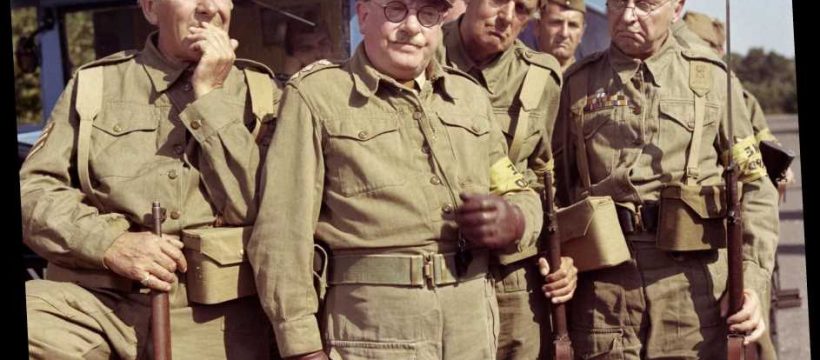IT is Remembrance Sunday, which means we can pay tribute to the sacrifices of our soldiers and their families.
During World War Two there were challenges on the Home Front – and not just for the likes of Dad’s Army.
Food, water, clothes and petrol were all rationed. It made people frugal in ways that seem alien in our throwaway culture.
I look at how wartime Brits got by – and what we can learn from them.
Food
THEN: A typical weekly food ration for an adult included 113g bacon and ham (about four rashers), one shilling and ten pennies (about 9p) worth of meat (about 227g minced beef), 57g butter, 57g cheese and 113g margarine. Other foods such as canned meat, fish, rice, cereal and biscuits were available on a points system.
Vegetables were grown in every spare scrap of land, including gardens and parks, while families kept pigs and chickens and hunted wild rabbits. Housewives came up with ingenious ideas to liven up family meals, such as creating mock goose dishes using lentils and fish made from rice. Wasting food was a crime.
NOW: The average family with children throw out 270kg of food every year – equivalent to £800.
TIPS: Save money and reduce waste by planning meals through the week and sticking to a budget. Using up leftovers can save £67 a month, according to the recycling charity Wrap. People in wartime Britain would preserve seasonal fruit and veg in bottles, but these days we have freezers. Frozen foods are typically cheaper and can help reduce waste. This week 350g of fresh strawberries costs £2.69 at Asda but a frozen pack the same size is £1.65.
Grow your own fruit, veg and herbs in the garden. A packet of parsley seeds is £2 but a single bag of fresh leaves is £1.25 in Tesco.
Community
THEN: People banded together and volunteered to protect the home front, including posts in the Home Guard, ARP and the Women’s Voluntary Service.
NOW: More than half of us do not even know our neighbour’s name and almost a third do not know what they look like, according to a survey by beer company Amstel.
TIPS: Get to know your community. Joining a Neighbourhood Watch group not only reduces your chances of getting burgled but gets you a five per cent home insurance discount. With the average premium being £144.70, that’s a discount of £7.23.
Clothes
THEN: The shortage of textiles and demand for uniforms, then worn by a quarter of the population, meant clothes were rationed from June 1941.
Adults were allowed 66 coupons a year, with more for growing teenagers. All clothes were rated. A pair of shoes cost five coupons and it was 18 coupons for a suit. The Women’s Voluntary Service set up clothes exchanges and families were also urged to make do and mend.
NOW: The average household owns £4,000-worth of clothes but a third of those have not been worn for at least a year – mostly because they no longer fit. Each household spends £1,232 a years on clothing and footwear, according to the Office for National Statistics, and the nation bins more than 350,000 tonnes.
TIP: Sell unwanted clothes and buy second-hand ones for a fraction of their “new” price using local Facebook groups and eBay. Also try charity shops for bargains. NCT Nearly New Sales let parents sell kids’ clothes and toys locally, with families making an average £64 per event. Get a sewing kit for repairs. There are tutorials on YouTube if you do not know your needles. When all else fails, swap bags of worn garments at H&M for a £5 voucher.
Water
THEN: Families were allowed only five inches of bath water to share per week, to conserve fuel. Even the baths in Buckingham Palace had lines drawn in them.
NOW: Each person uses 160 litres of water a day, only 4 per cent of which is for drinking.
TIP: Cutting a minute off your shower time saves the average four-person household £120 a year.
Petrol
THEN: Petrol was the first item to be rationed during the war and withdrawn from private use in 1942 as it was needed for essential work.
Walking was encouraged and bicycles were the main mode of transport.
NOW: There are 31million petrol and diesel cars on our roads. Drivers spend an average £162 per month running them, according to Kwik Fit.
TIP: Bikes are a cheaper and greener alternative, particularly for those who can ride to work.
The average UK employee spends £146 on their monthly commute, £1,752 a year, according to Total Jobs.
Swap that for a bike costing £400 and you could save more than £1,350 a year.
Source: Read Full Article






